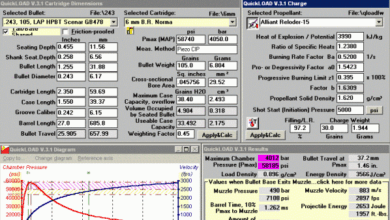Exploring the Mysteries of ghuk-y44551/300: A Deep Dive into Its Significance and Implications

Introduction: The Enigma of ghuk-y44551/300
In a world driven by digital codes, scientific identifiers, and cryptic nomenclatures, certain elements stand out for their enigmatic presence. One such phenomenon is ghuk-y44551/300. While to the casual observer, this sequence may appear to be just another random alphanumeric code, those who venture deeper into its context find themselves drawn into a labyrinth of mysteries, theories, and significant implications. ghuk-y44551/300 is not just an intellectual exercise—it’s an essential inquiry into the ways hidden codes shape our understanding of complex systems and potential realities.
Throughout this article, we will unfold various aspects of ghuk-y44551, tracing its roots, examining its perceived roles, and dissecting its broader implications across different sectors.
Understanding the Roots of ghuk-y44551/300
To begin exploring the mysteries of ghuk-y44551/300, we must first ask: where does it originate? Some theorists suggest that ghuk-y44551 might be a part of a complex database coding system, a digital signature linked to undisclosed projects, or even a ciphered key to hidden knowledge in certain classified circles.
Unlike commonly understood identifiers like ISBNs for books or IP addresses for the internet, ghuk-y44551 seems to defy easy categorization. The prefix ‘ghuk’ gives no direct linguistic or technical clues, while the combination of ‘y44551/300’ hints at systematic structuring. Its structure compels researchers to delve into both cryptographic and semiotic analyses, aiming to decode any inherent meaning or significance.
Could it represent a classified project? A unique experimental protocol? A lost communication sequence? The very uncertainty surrounding ghuk-y44551 adds to its allure.
Theoretical Interpretations of ghuk-y44551/300

The Cipher Theory
One of the leading interpretations of ghuk-y44551/300 proposes that it acts as a cipher—an encoded message requiring decryption. This theory suggests that ghuk-y44551 may not mean anything in plain sight but holds significant meaning when decoded using a specific cipher system.
Cryptography experts propose that such identifiers might be used in classified government communications, secret scientific experiments, or even as markers within a multi-layered augmented reality game. The multi-faceted nature of ghuk-y44551 supports this interpretation, highlighting how codes can operate on levels beyond the superficial.
The Quantum Signature Theory
Another perspective considers ghuk-y44551/300 as a potential quantum signature. In this view, ghuk-y44551 could represent data points or algorithmic references crucial to quantum computing research or advanced AI modeling.
As quantum systems often utilize highly specific coding formats to map data across complex multidimensional spaces, the seemingly arbitrary mix of characters and numbers in ghuk-y44551 could make perfect sense within such frameworks.
Implications Across Different Fields
Technological Implications
If ghuk-y44551/300 pertains to cutting-edge technology, its existence could point to advances in areas like artificial intelligence, cybersecurity, and information encryption. Understanding ghuk-y44551 could unlock new methods of securing digital communications or enhancing machine learning processes.
Furthermore, if ghuk-y44551 ties into classified technological initiatives, it suggests that we are only scratching the surface of what is technologically possible today.
Societal Implications
Beyond the realm of technology, ghuk-y44551/300 might also influence social structures. In a world where data privacy and surveillance are hot-button issues, the presence of mysterious codes like ghuk-y44551 raises questions about what is being hidden from public view and why.
Is society being guided or manipulated through unseen algorithms and coded directives? If so, the cryptic nature of ghuk-y44551 embodies the broader struggle between transparency and secrecy in the digital age.
Potential Connections and Speculations
ghuk-y44551/300 and Secret Projects
Some speculative researchers tie ghuk-y44551/300 to undisclosed experimental programs. Whether these are defense projects, psychological studies, or cutting-edge tech innovations, the possibility remains that ghuk-y44551 is a project code hidden from mainstream discourse.
Whistleblower reports from various industries hint at similarly coded project names to conceal real objectives. Could ghuk-y44551 be among them?
ghuk-y44551/300 in the World of Alternative Realities
Another angle worth exploring involves the use of ghuk-y44551/300 in simulated or alternate realities. With advancements in virtual reality (VR) and augmented reality (AR), developers often use complex codebases to govern hidden aspects of their worlds. ghuk-y44551 could signify a hidden ‘world seed,’ an algorithm responsible for generating unseen dimensions or experiences.
This speculative realm not only fascinates technologists but also philosophers, questioning the nature of reality itself.
Breaking Down the Structure of ghuk-y44551/300
To truly understand ghuk-y44551/300, we must dissect its components:
-
“ghuk”: A potential placeholder, acronym, or coded abbreviation.
-
“y44551”: A sequence that could represent a specific data entry, date code, or numerical signature.
-
“300”: Perhaps a version number, an experiment stage, or a sample size.
This tri-part breakdown suggests a deliberate design, one possibly intended to obscure rather than reveal. Such multi-layered structuring is common in highly confidential systems where obfuscation is necessary for security.
Symbolism and Hidden Messages within ghuk-y44551/300
If one were to approach the ghuk-y44551/300 symbolically, deeper meanings might emerge. The presence of ‘300’ could invoke historical references like the famed Spartan warriors, emphasizing resilience or secrecy. ‘Y44551’ might correlate with genealogical markers or stellar catalogs, hinting at cosmic or evolutionary undertones.
The symbolism hidden within ghuk-y44551 may serve as a cryptic pointer toward broader philosophical or existential themes, encouraging observers to think beyond the surface.
Cultural Reflections on the Mystery of ghuk-y44551/300
Society has long been fascinated by the unknown. From ancient runes to modern secret societies, encoded knowledge holds a potent allure. Exploring the Mysteries of ghuk-y44551/300: A Deep Dive into Its Significance and Implications taps into this cultural fascination, representing the eternal human quest to decipher the undecipherable.

In literature, art, and media, enigmatic codes often signify hidden truths or mysteries. By this measure, ghuk-y44551 is not just a random anomaly—it is a mirror reflecting our collective yearning for understanding.
Challenges in Decoding ghuk-y44551/300
Despite various efforts, ghuk-y44551/300 remains largely undecoded, highlighting key challenges:
-
Lack of Context: Without an associated framework, it’s hard to determine its exact purpose.
-
Possible Misdirection: It could be a decoy or a false flag created to distract or mislead.
-
Complex Multilayered Nature: ghuk-y44551 might operate across multiple interpretative layers, each revealing different insights.
The very act of decoding ghuk-y44551 becomes a journey into interdisciplinary research, combining cryptology, quantum theory, semiotics, and philosophy.
Future Research and Exploration
Going forward, deeper research into ghuk-y44551/300 could involve:
-
Cross-disciplinary studies combining AI analysis, human pattern recognition, and cryptographic decoding.
-
Collaboration between independent researchers and established institutions.
-
Hypothesis testing based on emerging theories from fringe science and experimental mathematics.
As with all great mysteries, patience, creativity, and an open mind are essential to truly unlock the secrets of ghuk-y44551.
Conclusion: The Everlasting Allure of ghuk-y44551/300
ghuk-y44551/300 reveals a fascinating truth: some mysteries are designed not just to be solved but to inspire endless exploration. Whether ghuk-y44551 turns out to be a technical artifact, a philosophical symbol, or a concealed reality, its impact lies in its ability to ignite curiosity, drive inquiry, and push the boundaries of human understanding.
Also Read: Valktero: Innovative Smart Solutions for Modern Life and the Future



